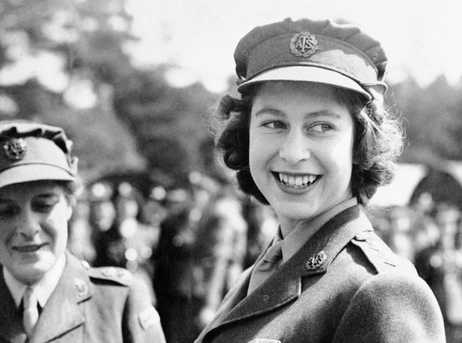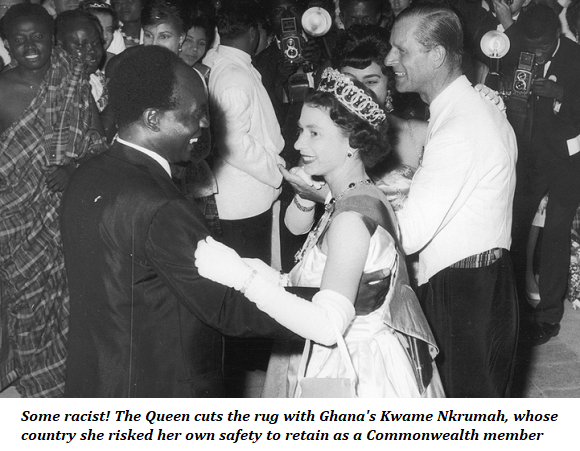
Long Lived Our Platinum Queen

Many will find the idea of King Charles III a difficult notion to accept at first, not for reasons of personal disdain (although some will find his green ratbaggery, should it continue to be given public voice, a barrier to affection) but because Queen Elizabeth II reigned so long and was part of so many lives. In Quadrant’s February issue, Mark McGinness marked those 70 remarkable years with a tribute to an equally remarkable woman. That appreciation is reproduced below. — rf
_________________
On February 6, bells rang from churches throughout Queen Elizabeth II’s united kingdom; a forty-one-gun salute at midday disturbed the peace of Hyde Park in London, with a further twenty-one guns in Windsor Great Park and sixty-two guns at the Tower of London to mark her seven decades as sovereign. It is already six and a half years since she broke the record of the longest reign by a British monarch formerly held by Queen Victoria (sixty-three years and 215 days). Of course, this Queen wanted no fuss on the day—the anniversary of her accession is an unavoidable reminder of the early death of her beloved father. So it was business as usual.
On the evening of February 5, 1952, at Tree Tops Hotel in the heart of the Kenyan forest, when Elizabeth Windsor climbed a mgugu tree as a princess and the following morning came down as a queen. She and Prince Philip were in Kenya en route to Australia. On February 6, she was watching the sun rise from a platform in the trees as an eagle soared above them—it was thought that, at that moment, George VI died in his sleep at Sandringham.
A day later, the twenty-five-year-old monarch arrived in London, dressed in black, and descended the stairs of her plane to be greeted by Prime Minister Churchill, who had served as a soldier in the reign of her great-great grandmother, Victoria. Her youth and composure prompted hopes of a new era—a second Elizabethan Age. Interestingly, a tree featured in the accession of Elizabeth I too. The first Elizabeth, also twenty-five, sat beneath an oak at Hatfield, and when told she was queen, replied, “This is the Lord’s doing, and it is marvellous in our eyes.”
Elizabeth II’s longevity and constitution, reminiscent of her remarkable mother, continue to amaze. She is now the longest reigning monarch on earth. Later this year she will beat King Bhumibol’s reign in Thailand (from 1946 to 2016). The next to beat is Louis XIV, who ruled from 1643 to 1715 (seventy-two years and 110 days).
While contemplating the Sun King, it was said of Queen Victoria and her son (eventually Edward VII), “The Queen continues to reign, and reign and won’t let the son shine.” It might be said of her great-great granddaughter, Elizabeth, “The Queen continues to shine, and shine and won’t let the son reign.” But if one looks right back to 1947, it is not difficult to see why she feels bound to retain the reins and make her septuagenarian son wait a bit longer. Again in Africa, the Princess had spoken from the heart on her twenty-first birthday, four years before she succeeded. “I declare before you all that my whole life, whether it be long or short, shall be devoted to your service and the service of our great imperial family to which we all belong.” Seven decades on, it is universally agreed that Elizabeth has been true to her word.
She has spent most of her 25,568 days doing her duty. She welcomed the Ceausescus as house guests to Buckingham Palace; she has shaken the hand of Martin McGuinness; hosted Paul Keating to a barbecue at Balmoral; listened to Margaret Thatcher once a week for eleven and a half years; and even held hands with Tony Blair under the Dome to mark the new Millennium. This monarch has been a slave to duty.
While she sounded so certain and determined in 1947, Elizabeth’s destiny had only dawned in December 1936, when her uncle, Edward VIII, abdicated to marry Wallis Simpson, hoisting Elizabeth’s hesitant, apprehensive father onto the throne. When a footman brought the news to the young princesses that their beloved papa was king, Margaret asked, “Does that mean you will have to be the next queen?” “Yes, someday,” Elizabeth replied. “Poor you,” countered Margaret. Biographers claim that every night thereafter Elizabeth prayed for a brother.
That prayer was not answered but she was able to marry, in 1947, Philip Mountbatten (born Prince Philip of Greece and Denmark) the man she had fallen in love with at thirteen. When asked what his job was, Philip always answered, “to support the Queen” and, for all his gaffes and restlessness, he too was true to his word.

DESPITE the hopes, it was never to be a New Elizabethan Age. The fabric of Britain was still rent by the Second World War and as it recovered, Europe emerged and the empire crumbled. But what arose from the remnants of the empire was the Commonwealth, and its survival, against extraordinary odds, is one of the Queen’s greatest achievements.
To keep that widespread family connected, she travelled. In fact, no one has travelled as far, so often and for so long—from her first trip abroad with her parents in 1947 to her last—to Malta in October 2016.
The Commonwealth has, against all odds, survived prime ministerial sackings, Fijian coups and Ugandan and Zimbabwean dictators. It is sixty-eight years since her first Commonwealth tour as Queen, including, still memorably, to Australia. It is said that three-quarters of the country’s population of 9 million saw the Queen in 1954. She visited seventy towns in fifty-eight days. It must have been hell.
Revisionists delight in replaying then-prime minister Robert Menzies’s paean to his sovereign at Parliament House in 1963: “I did but see her passing by, and yet I love her till I die.” But the Opposition Leader, Bert Evatt, was just as warm in his address. They were simply reflecting the national mood. The country was mad for the Queen and Duke.
One can expect a tribute from her fifteenth Australian prime minister, who was born sixteen years into the Queen’s reign. Any hope of Menzian lyric or Whitlamesque wit is bound to be dashed, but one would hope it might be more eloquent than Mr Morrison’s “You were quite the hit” when he was received by the Queen at Windsor last year.
It is remarkable that Elizabeth remains Queen of Australia. Prince Philip could not believe the outcome of the referendum in 1999. On hearing the result, he reportedly burst out, with characteristic bluntness, “What’s the matter with these people? Can’t they see what’s good for them?” No one could deny that the personal qualities of the Queen—her steadfastness, sagacity and discretion—played a part in the plebiscite’s defeat, but also to blame was the model offered as a replacement. The alternative was a president appointed by parliament. But many republicans wanted an elected president. Had that been the option in 1999, we might have already lived through the presidencies of Dick Smith and Eddie McGuire.
In her seventy years on the Australian throne, our sovereign has visited sixteen times—an average of once every four years. Considering the breadth of her realms, it has been an Olympian effort. But is a time-share monarchy enough? Her Majesty’s life is a British one—she must have spent eighty of her ninety-five years in England and Scotland. Her family, in particular her heirs, have visited Australia regularly and kept the flame alive. The Prince of Wales’s affection for the country that (it has been said) made a man of him is genuine and undimmed.
The only unsettling issue has been to see his (otherwise model) son and heir, Prince William, attend the Rugby World Cup unabashedly supporting Wales. Of course, as their Patron, he was no doubt obliged to do so. Now his peerless consort, Catherine, has been appointed Patron of English Rugby.
Many may say, “Well, after all, it’s only sport”, but these primal skirmishes underline the fragility of multiple sovereignty. Perhaps TRHs should be advised not to accept these divisive patronages; they highlight the competing loyalties inherent in the model we have. William and Catherine are, after all, destined to be King and Queen of Australia too. With a shrinking royal family, surely they have sufficient causes and endeavours to patronise?
These slight cracks can be fixed and, in any case, while they might make one question the system, they do not reflect on our reigning monarch. May she live at least long enough to congratulate herself on her hundredth birthday.
Mark McGinness is a frequent contributor and a long-time observer of the royal family
Madam: Archbishop Fisher (July-August 2024) does not resist the attacks on his church by the political, social or scientific atheists and those who insist on not being told what to do.
Aug 29 2024
6 mins
To claim Aborigines have the world's oldest continuous culture is to misunderstand the meaning of culture, which continuously changes over time and location. For a culture not to change over time would be a reproach and certainly not a cause for celebration, for it would indicate that there had been no capacity to adapt. Clearly this has not been the case
Aug 20 2024
23 mins
A friend and longtime supporter of Quadrant, Clive James sent us a poem in 2010, which we published in our December issue. Like the Taronga Park Aquarium he recalls in its 'mocked-up sandstone cave' it's not to be forgotten
Aug 16 2024
2 mins







